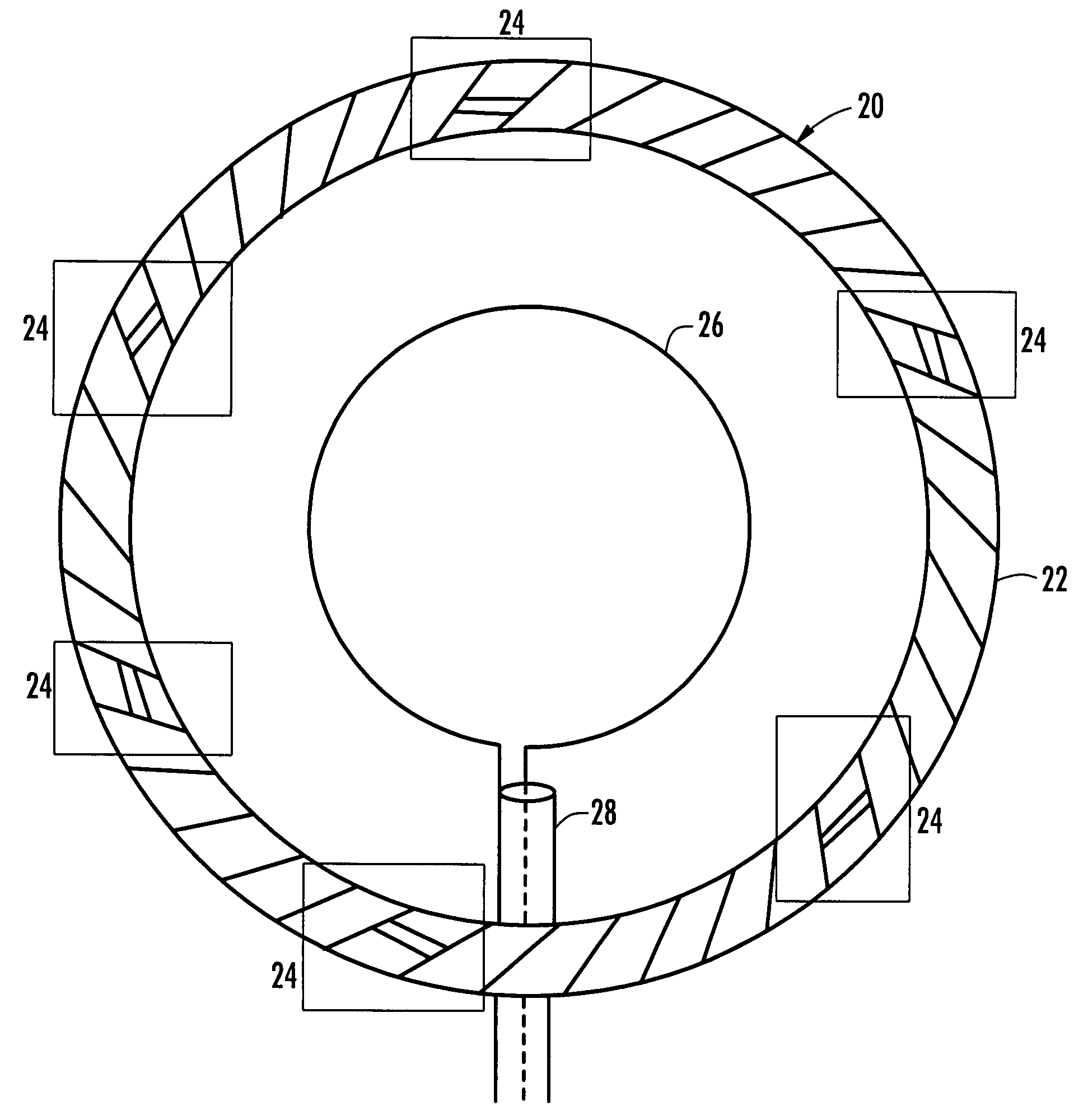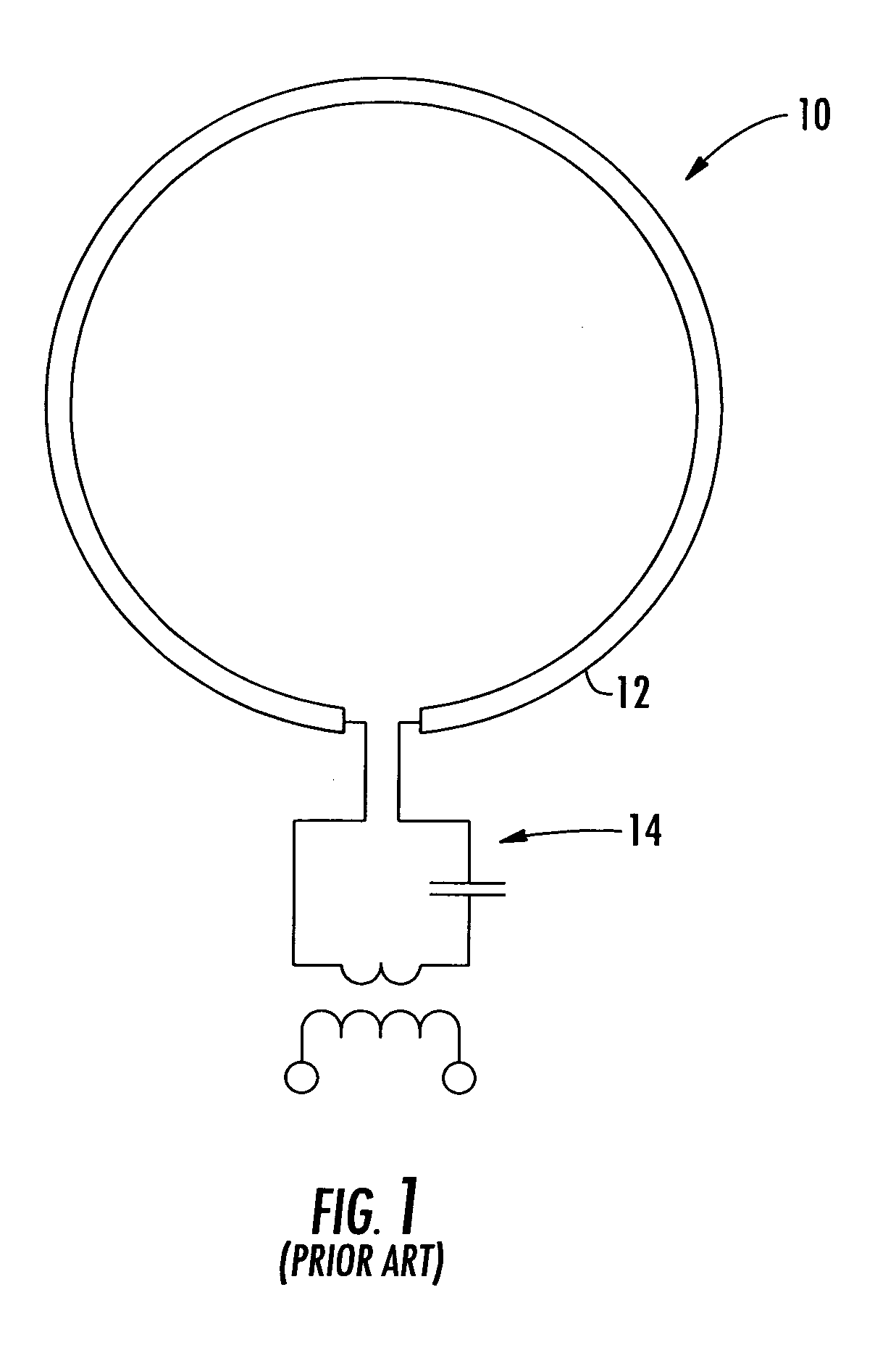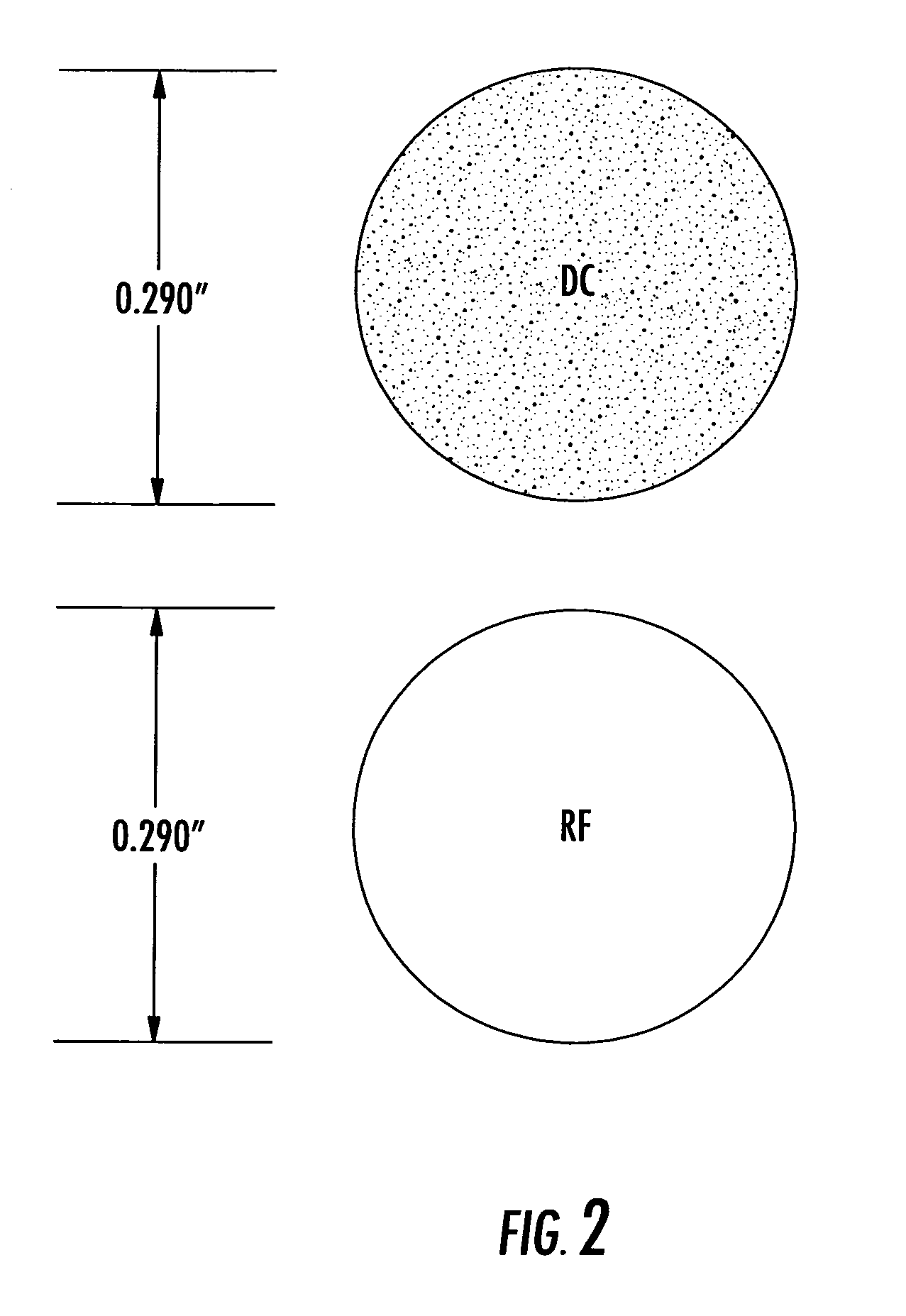Litzendraht loop antenna and associated methods
a loop antenna and loop antenna technology, applied in the field of loop antennas with increased gain, can solve the problems of not being able to reduce the size of the antenna, the antenna is sometimes large, and the application is not practical, so as to reduce the rf skin effect and increase radiation efficiency and gain.
- Summary
- Abstract
- Description
- Claims
- Application Information
AI Technical Summary
Benefits of technology
Problems solved by technology
Method used
Image
Examples
Embodiment Construction
[0016]The present invention will now be described more fully hereinafter with reference to the accompanying drawings, in which preferred embodiments of the invention are shown. This invention may, however, be embodied in many different forms and should not be construed as limited to the embodiments set forth herein. Rather, these embodiments are provided so that this disclosure will be thorough and complete, and will fully convey the scope of the invention to those skilled in the art. Like numbers refer to like elements throughout, and prime notation is used to indicate similar elements in alternative embodiments.
[0017]Referring initially to FIG. 1, a conventional loop antenna 10 will be described. The loop antenna 10 has a solid metal conductor 12 and feed structure 14. As described above, and further illustrated in FIG. 2, solid metal conductors suffer from RF skin effect which is a tendency for current to flow mostly near the outer surface of a solid electrical conductor as the f...
PUM
 Login to View More
Login to View More Abstract
Description
Claims
Application Information
 Login to View More
Login to View More - R&D
- Intellectual Property
- Life Sciences
- Materials
- Tech Scout
- Unparalleled Data Quality
- Higher Quality Content
- 60% Fewer Hallucinations
Browse by: Latest US Patents, China's latest patents, Technical Efficacy Thesaurus, Application Domain, Technology Topic, Popular Technical Reports.
© 2025 PatSnap. All rights reserved.Legal|Privacy policy|Modern Slavery Act Transparency Statement|Sitemap|About US| Contact US: help@patsnap.com



